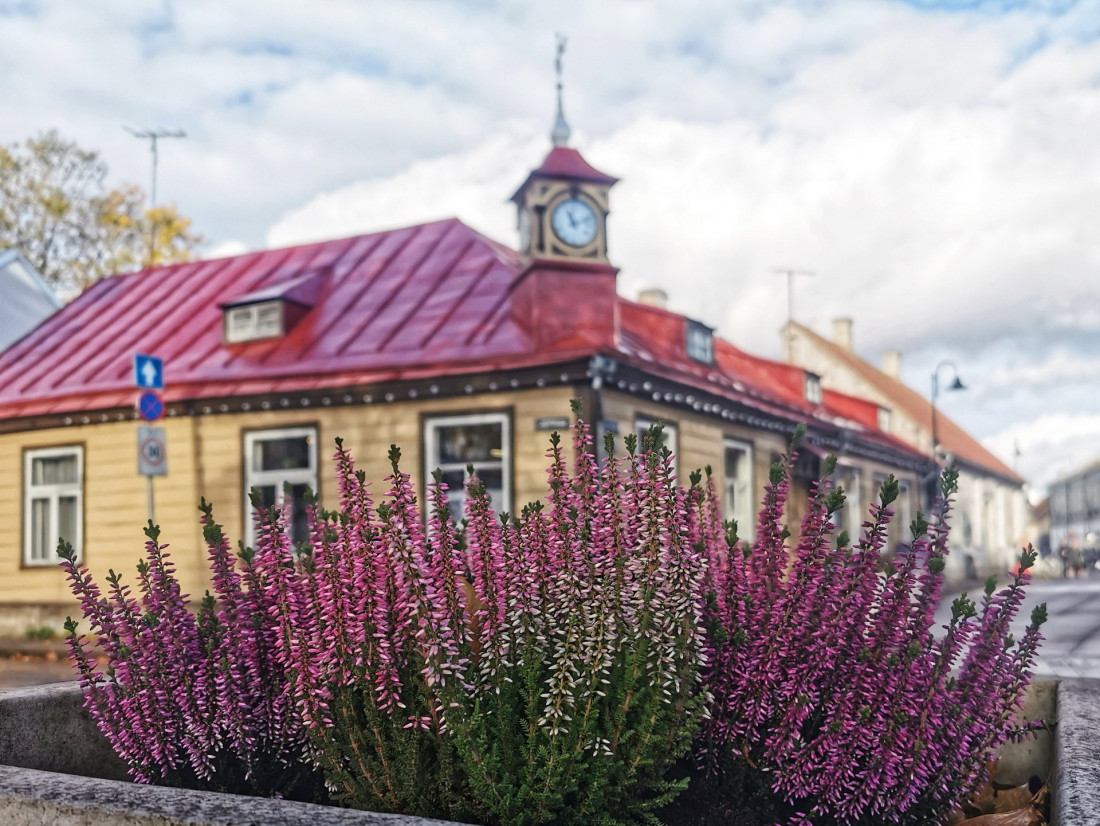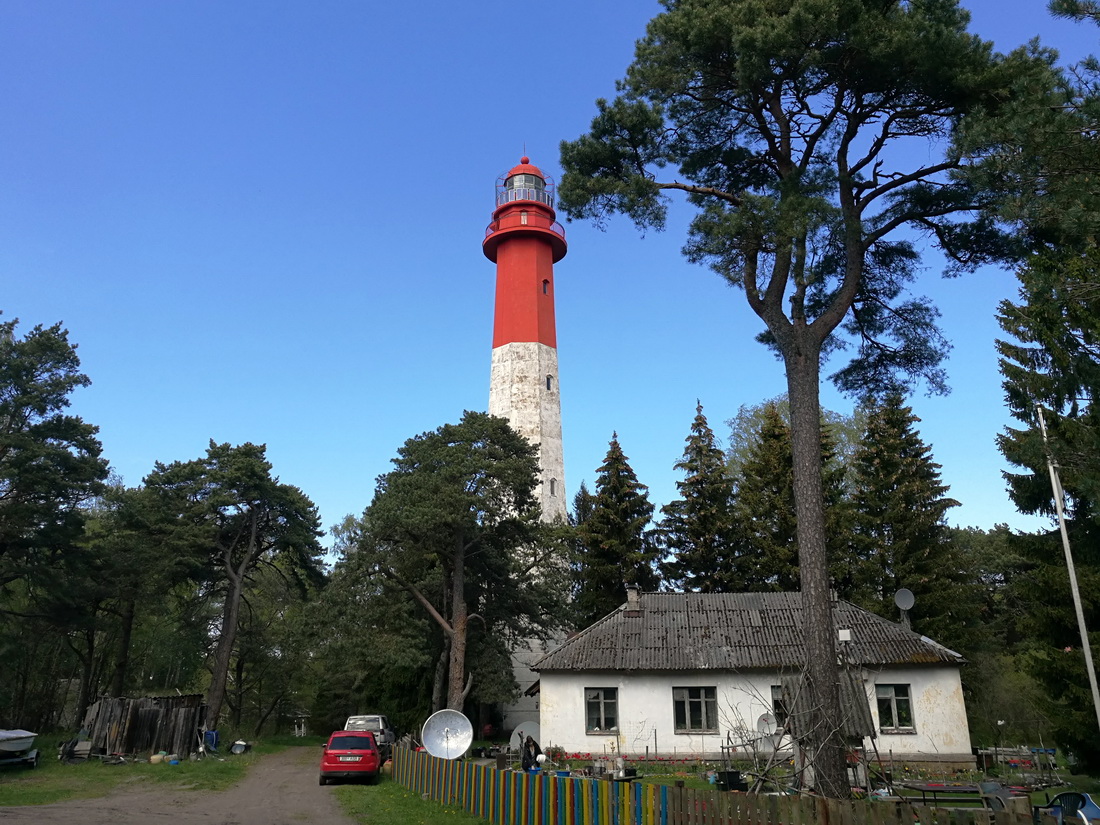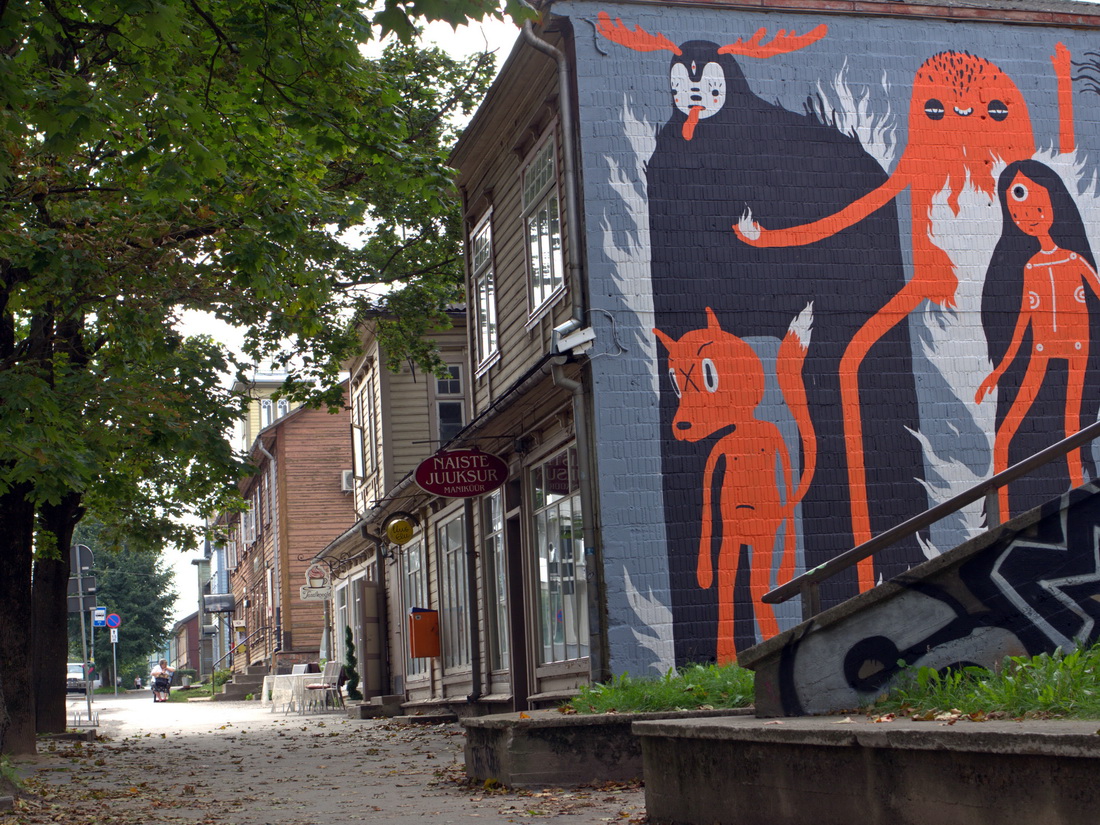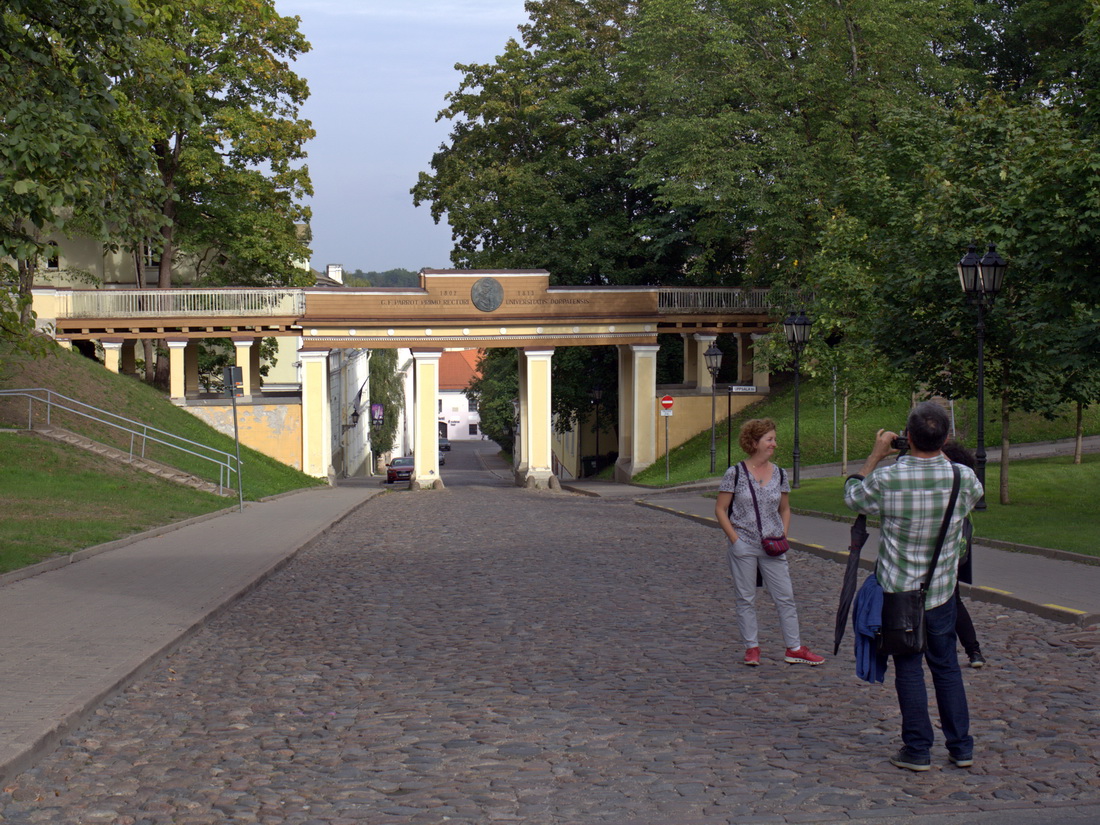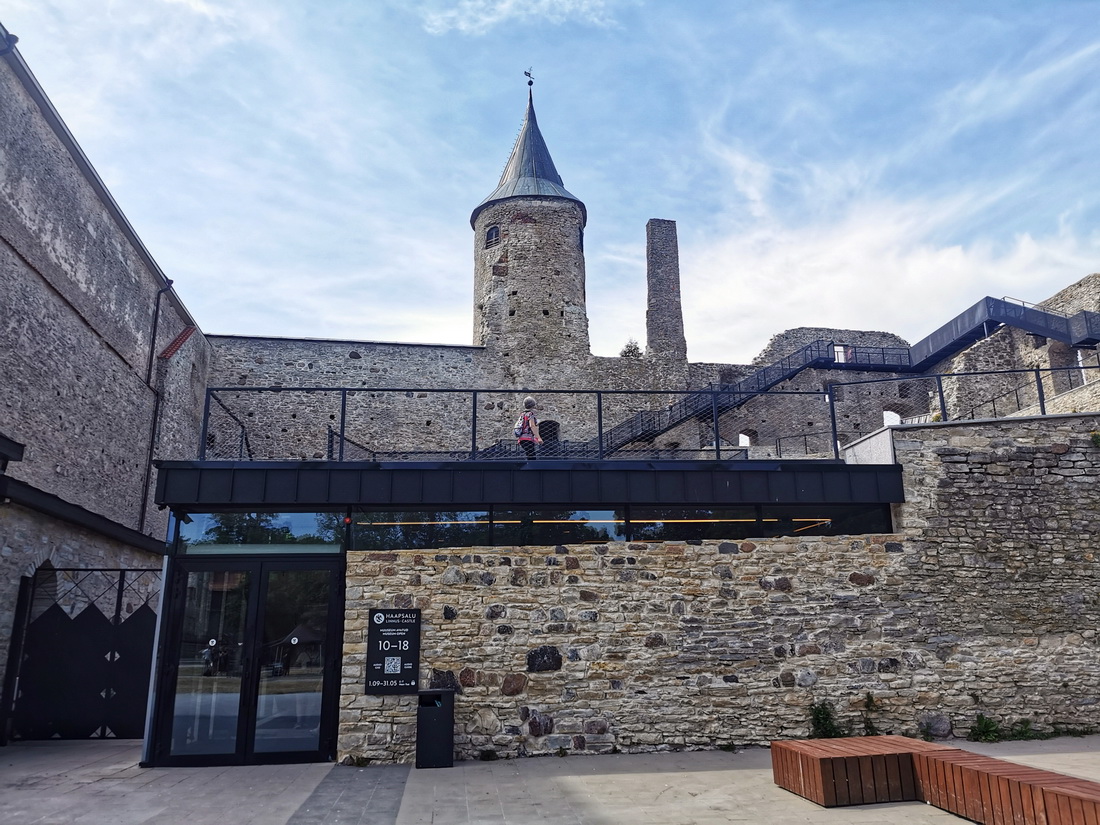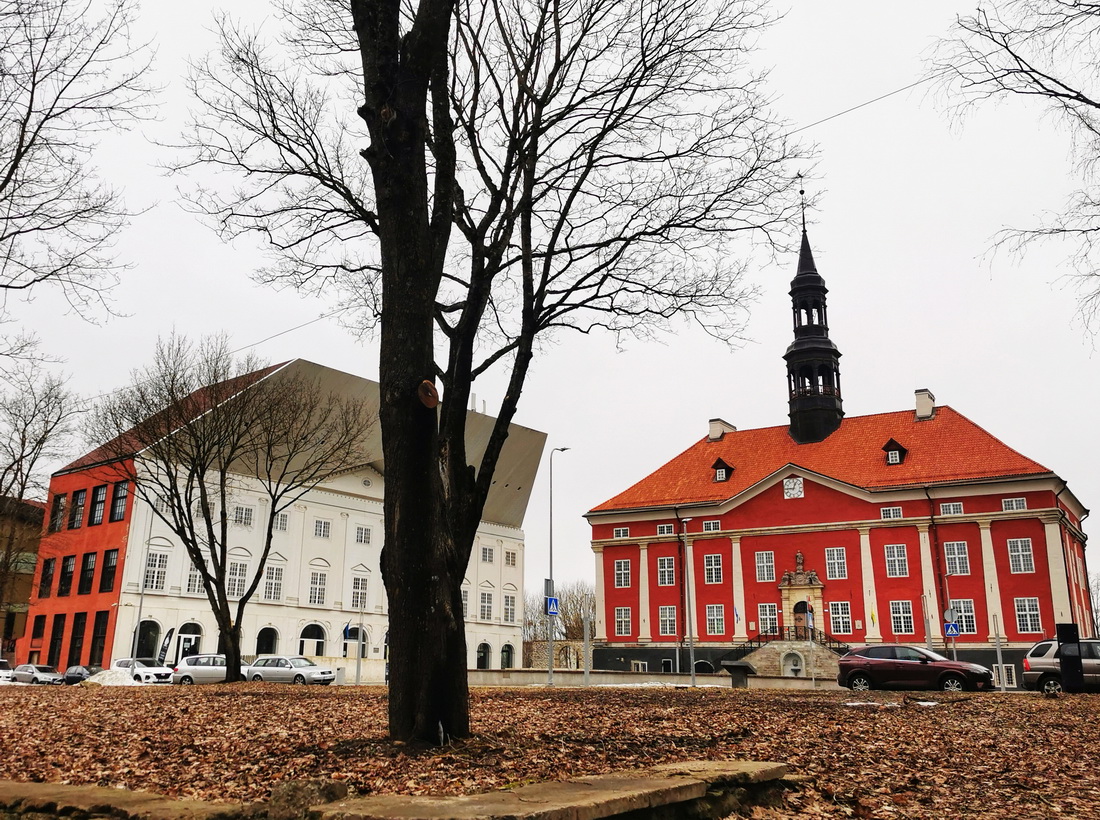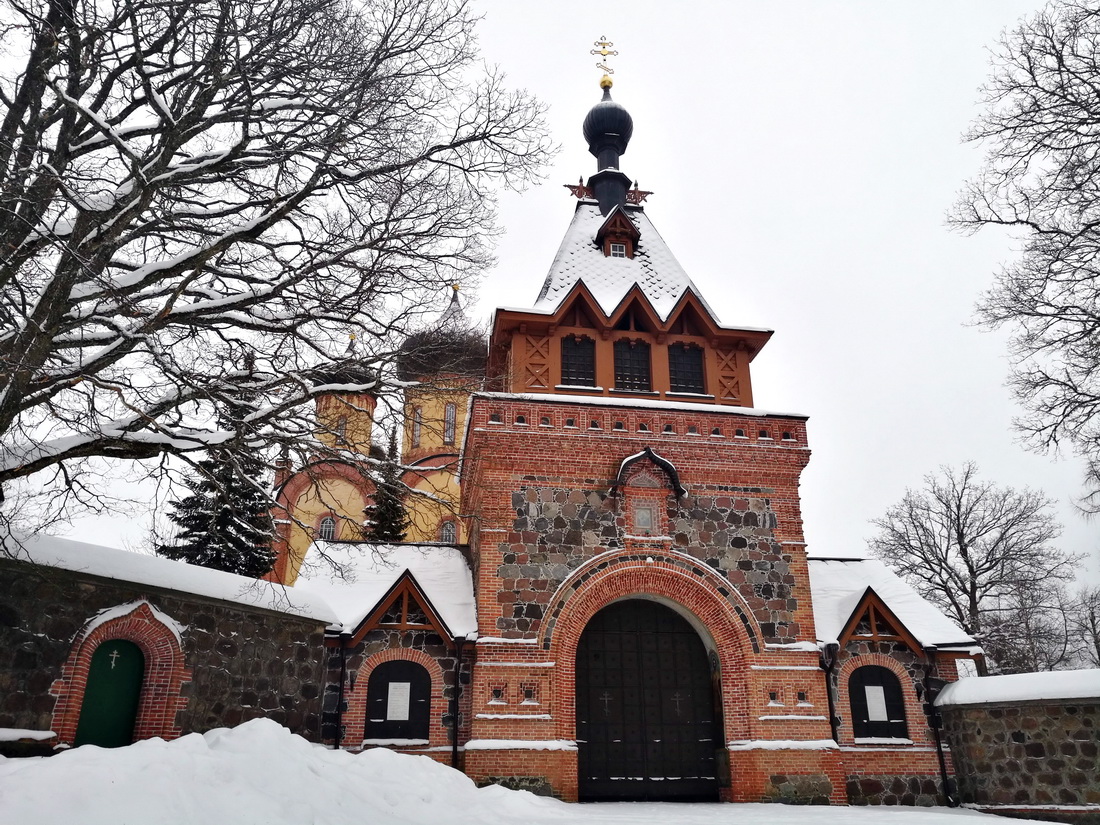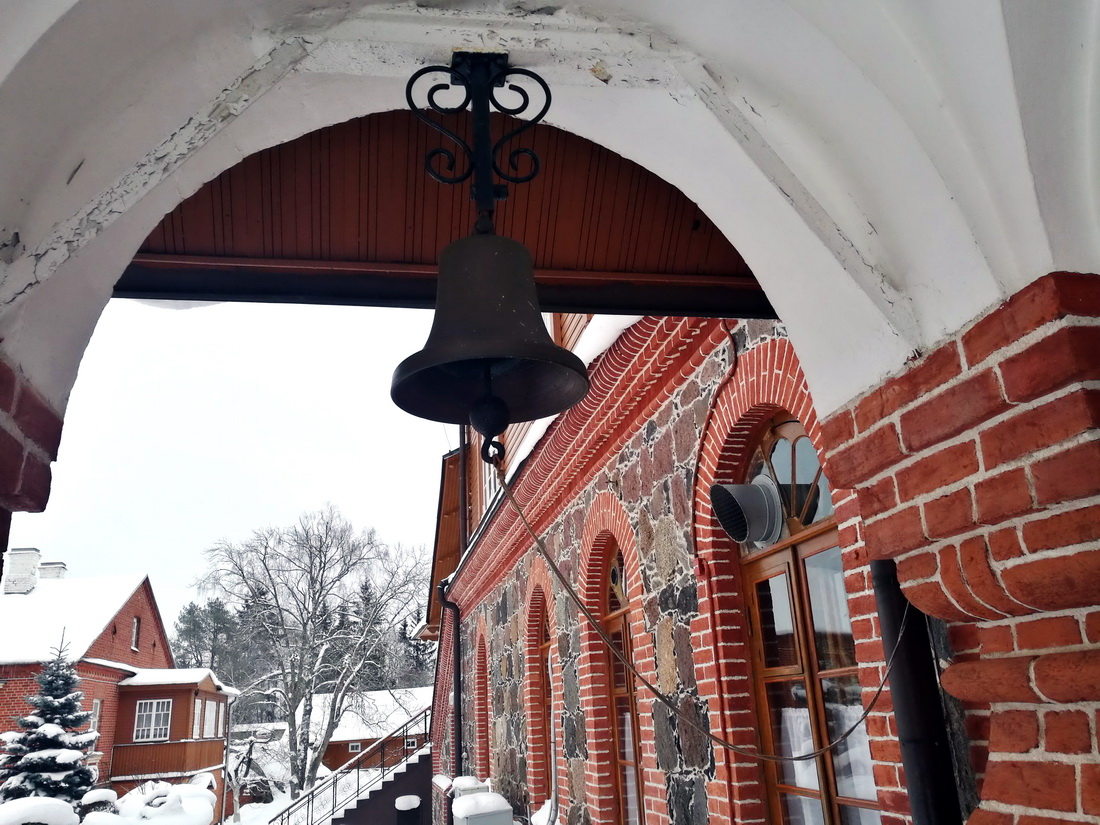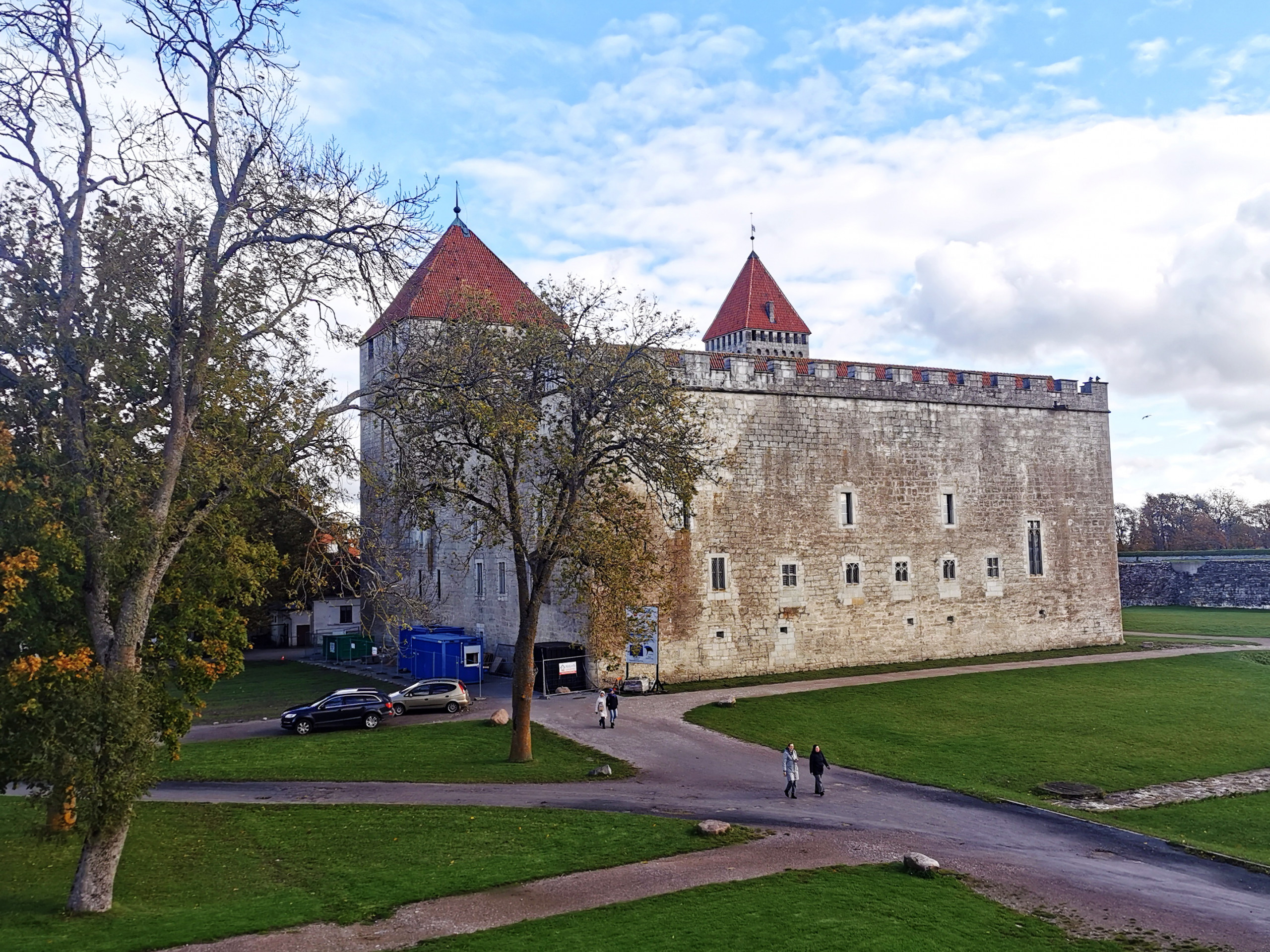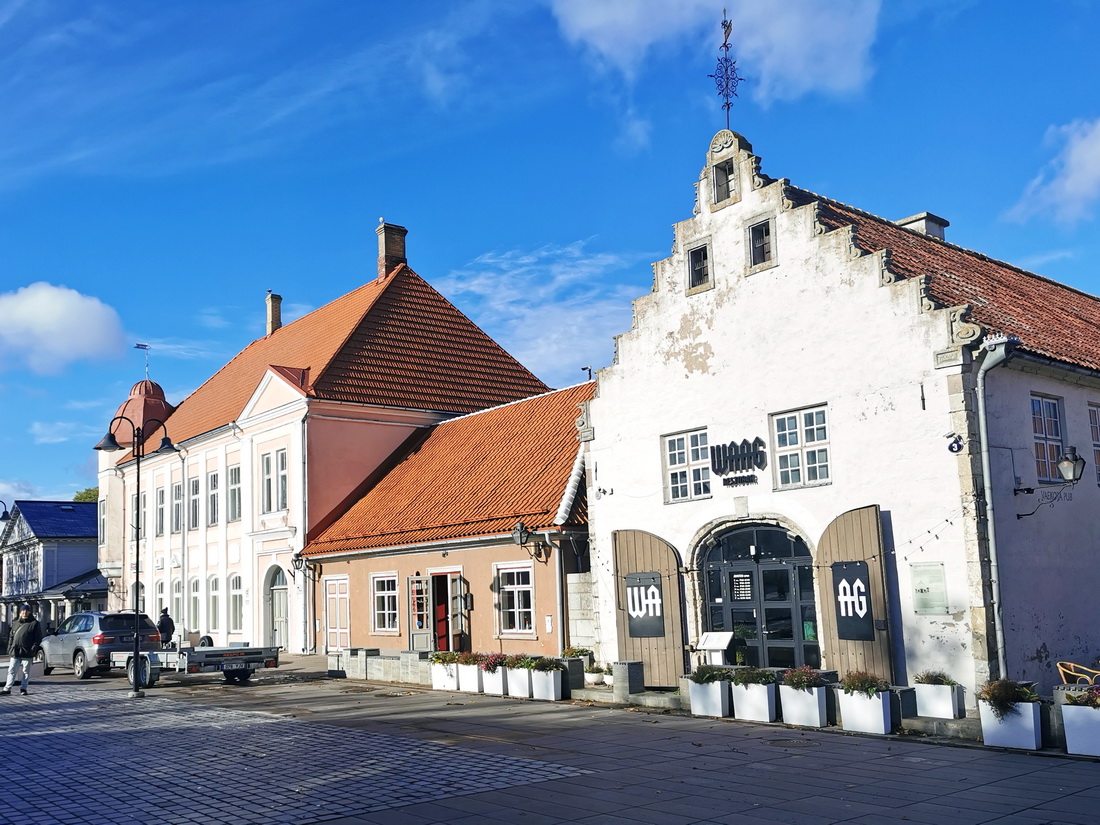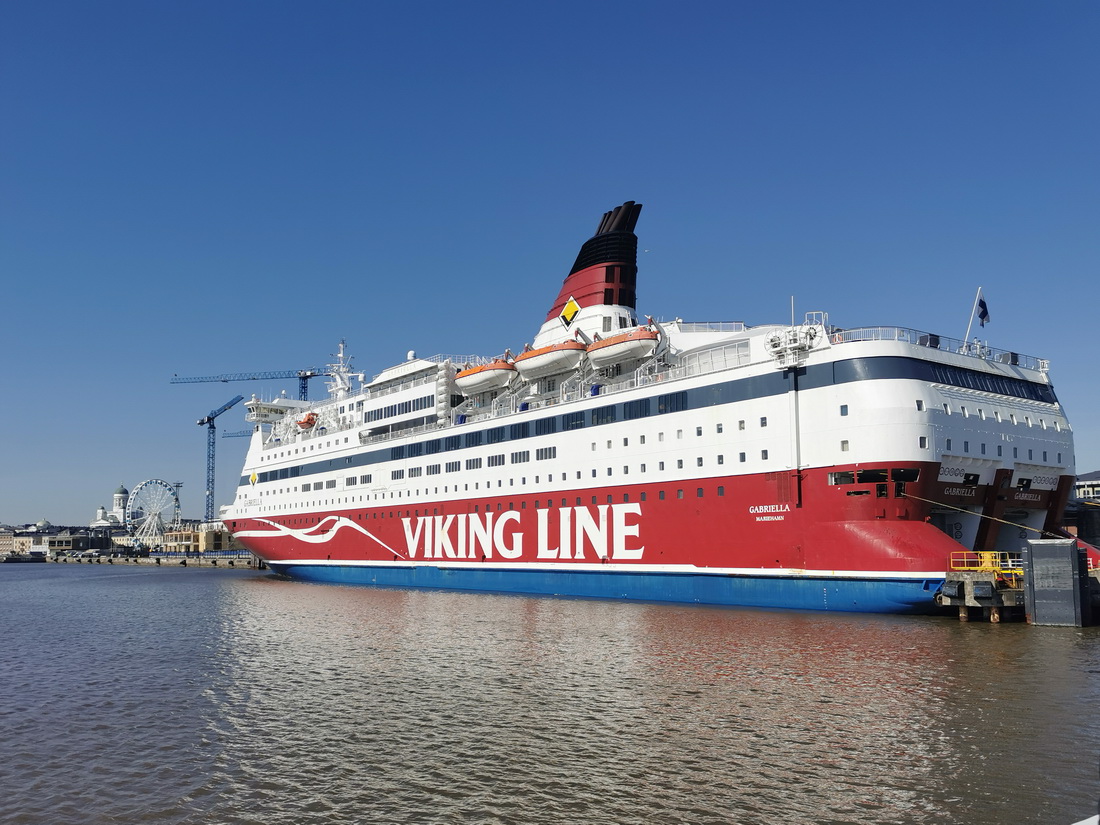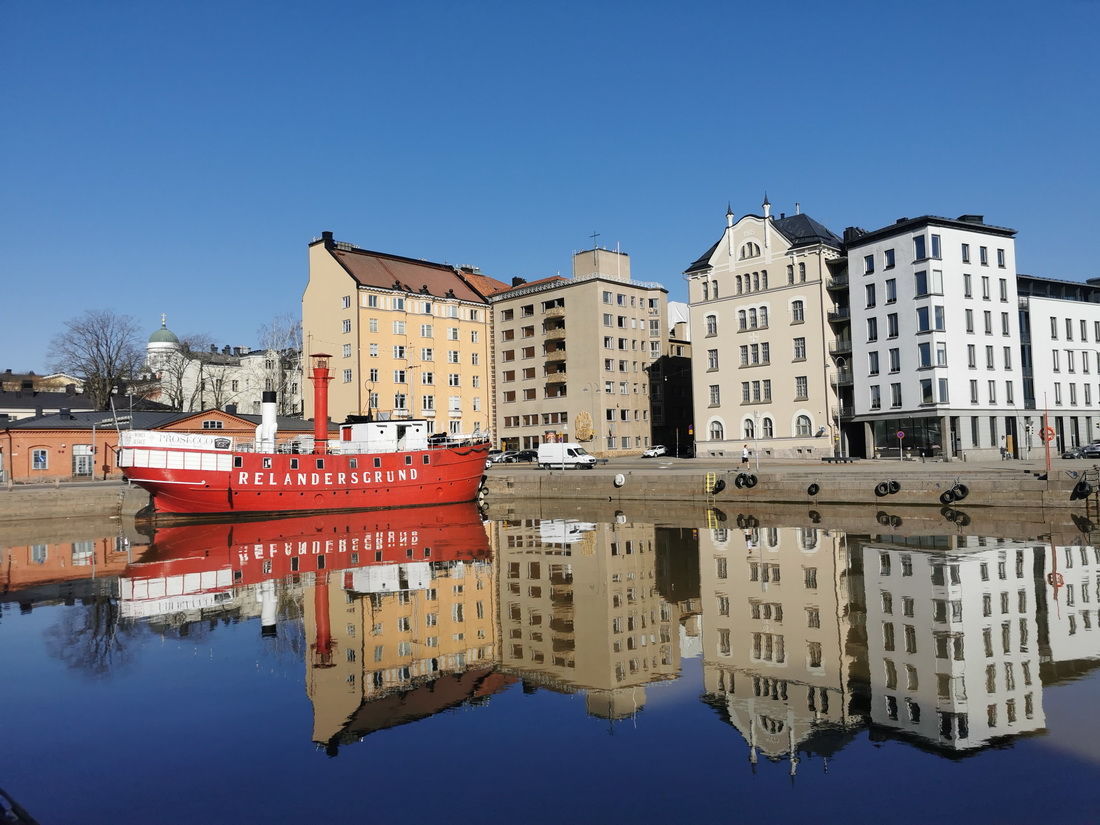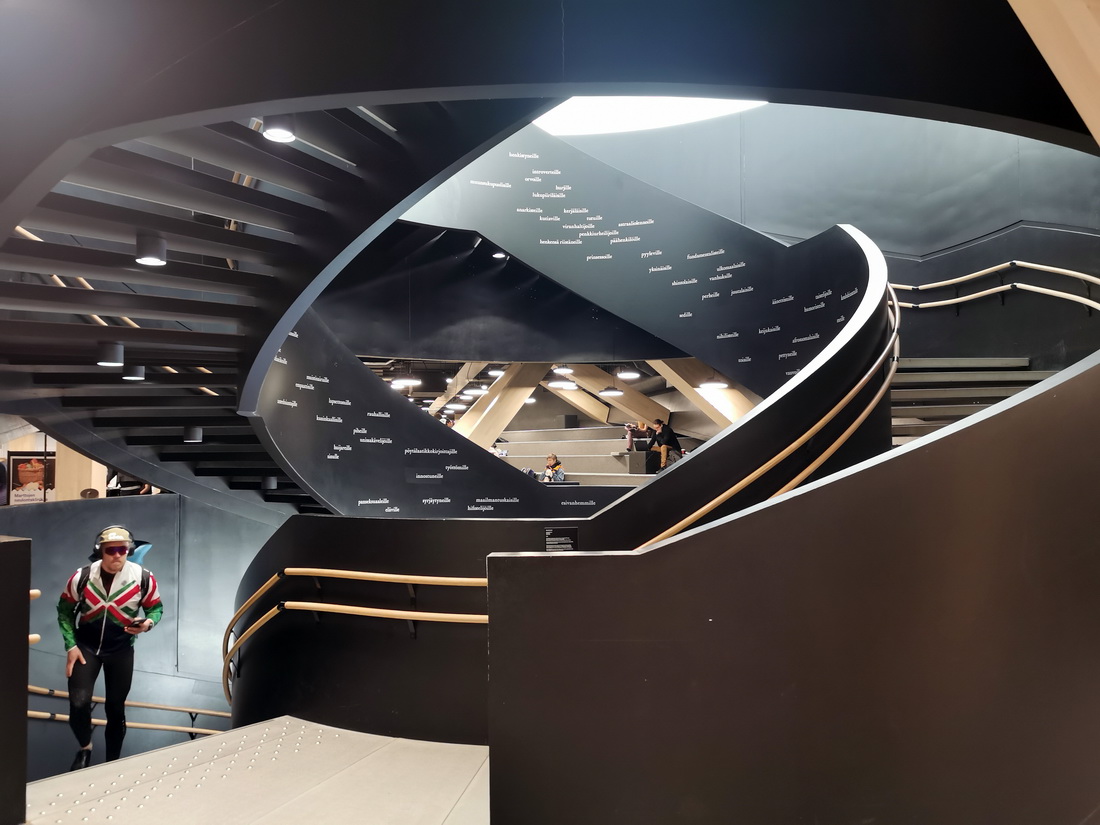Looking for a day trip from Tallinn that’s easy, scenic, and just a little bit strange (in a good way)? From misty bogs and half-forgotten border towns to ferry-hopping adventures and sleepy islands, Estonia is packed with surprises — and most of them are just a couple of hours away.
I’ve done all these trips myself — some more than once — and they’re still my favourite way to hit reset. No suitcase, no stress, just a bus ticket and a good pair of shoes.
So if you’re ready to trade cobblestones for pine needles or sea breezes, here are 9 easy day trips from Tallinn by bus, ferry or train. And if you’re still planning your time in the capital, don’t miss my full Tallinn travel guide — packed with local tips and no fluff.
Jump to a day trip:
Naissaar · Tartu · Viru Bog · Haapsalu · Narva · Viljandi · Kuremäe · Saaremaa · Helsinki
1. Naissaar Island
9 km from Tallinn · Ferry: 1 hour
If you’re craving a break from cobblestones and crowds, Naissaar Island in Estonia is your ideal summer escape — quiet, forested, a bit surreal, and just an hour away. This easy day trip from Tallinn is perfect for nature lovers, lighthouse climbers, and curious wanderers alike.
In brief:
- Best time to visit: May–September
- What to do: Lighthouse climbs, Soviet ruins, forest walks, beach swims
- How long to spend here: 7–8 hours
- Bring: Insect repellent, swimsuit, comfortable shoes
Naissaar (literally “Island of Women”) is about 17 times the size of Tallinn’s Old Town, yet only three people live here full-time. In summer, that number spikes to… a few dozen. It’s peaceful, a little wild, and full of stories — especially from its Soviet past.
Back then, Naissaar was a military zone, sealed off from civilians. Today, it’s open for visitors, with marked trails through abandoned bunkers and artillery ruins, plus beaches and forest paths. This day trip to Naissaar from Tallinn offers a strange mix of peace and Cold War tension — and that’s part of the charm.
The island’s red-and-white lighthouse is a highlight. It’s 45 metres tall, and on a clear day you might spot Finland shimmering on the horizon. But it’s not exactly nearby — getting there means a straight (and sometimes monotonous) walk through flat pine woods. You’ll earn your view. Too tired to hike? Join a local tour — they’ll drive you there in a bumpy Soviet-style truck, complete with jokes and questionable suspension.
Nature here is no joke: wild boars, adders, and legions of mosquitoes all call the island home. The boars and snakes keep to themselves — the mosquitoes, not so much. Bring repellent. Lots of it. Estonians tend to go for lavender oil over chemical sprays — and surprisingly, it does the trick.
There’s also a café and bike rental at the harbour if you’re after a smoother experience.
Want more details? I’ve written a full post about visiting Naissaar Island here — ferries, hiking tips, and how not to get lost among the bunkers.
How to get to Naissaar
Ferries to Naissaar run May to September and take about 1 hour. This is one of the easiest islands near Tallinn to reach without a car.
- Sunlines: departs from central Tallinn
- Monica: leaves from Pirita, 20 minutes by bus from the city
- Tickets: check Sunlines and Monica Cruises for the latest schedules.
Book ahead in summer — seats are limited and fill up fast.
Other islands near Tallinn
Aegna Island
Close to Tallinn and beautifully wild. Sandy beaches, blueberry-filled forests, and barely any people. Ferries run in summer, and there’s no shop — bring snacks.
Prangli Island
More lived-in than the others. Around 200 residents, a school, a shop, and a very real island vibe.
I’ve also written a detailed post about Prangli Island — including how to get there, what to eat, and where to meet the local seal (almost).
Ferry by Tuule Liinid departs from Leppneeme Harbour in Viimsi. Get there by bus with one transfer from central Tallinn
2. Tartu
80 km from Tallinn · Bus: ~2 hours
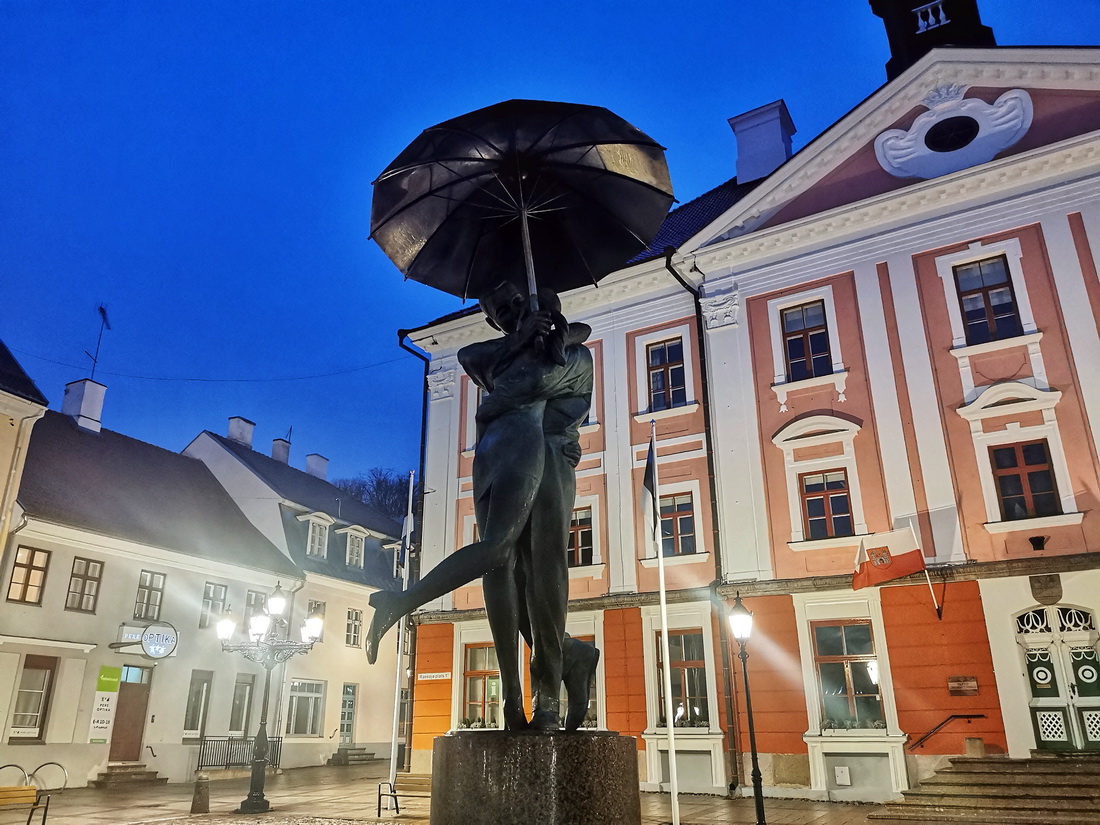
The Kissing Students Fountain in Tartu’s Town Hall Square — a classic photo stop on any day trip from Tallinn.
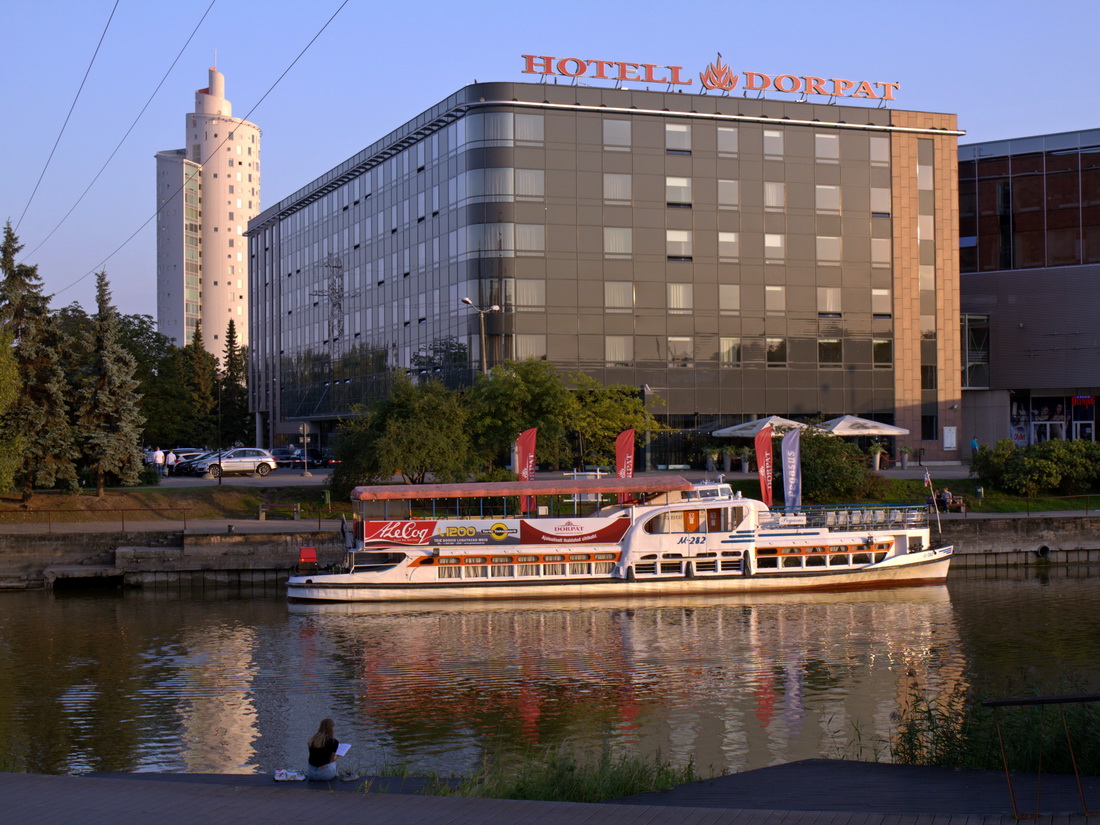
That tall white tower? It’s the AHHAA Science Centre — right next to Tartu’s bus station and full of hands-on science fun.
Tartu is Estonia’s second city — and it knows it. Less shiny than Tallinn, a bit more laid-back, and full of character. A day trip to Tartu from Tallinn offers a softer side of urban life: wooden houses with cheerful painted doors, riverside walks, and more students than tourists.
In brief:
- Best time to visit: All year round
- What to do: Historic centre, museums, student cafés, riverside strolls
- How long to spend here: At least 6–7 hours
The Town Hall Square is compact and cosy, ringed with cafés, shops, and a surprisingly cheerful Christmas market in December. Look closely, and you’ll see signs of old Tartu everywhere — low wooden houses, crooked doors, and windowsills with tiny sailboats (don’t ask why — just smile).
But Tartu isn’t stuck in the past. This is a young, lively university town, with Rüütli Street full of bars, bookshops, and cafés buzzing with conversation. It feels lived-in, but never boring.
What to See
Tartu has more museums than you’d expect for its size — and they’re worth your time.
- Estonian National Museum. Massive — 6,000 m² of exhibits on Estonian life, history, and culture.
Even the current president used to run the place. A few kilometres from the centre — take a local bus. - Tartu Art Museum + Toy Museum. Right on the square, and yes — the Art Museum really leans.
The Toy Museum is just a short walk and full of charm. - AHHAA Science Centre. Modern, hands-on, and bright — fun for kids and surprisingly engaging for grown-ups too.
- Botanical Garden. Small but lovely, especially when the rhododendrons bloom in May–June.
Entry is free (except the greenhouse). No café — just quiet plants and birdsong. - Estonian Sports and Olympic Museum. This interactive museum invites you to try ski jumping, test your reflexes, or compare yourself to Olympic legends. Fun, sporty, and great for rainy days.
How to get to Tartu
Buses from Tallinn to Tartu run frequently — about 10 times a day — from the Tallinn Central Bus Station.
The trip takes 2 to 2.5 hours, and you’ll arrive just a short walk from the Old Town. Book online (on tpilet.ee or Lux Express) or at the station.
3. Viru Bog
53 km from Tallinn · Bus: ~1 hour
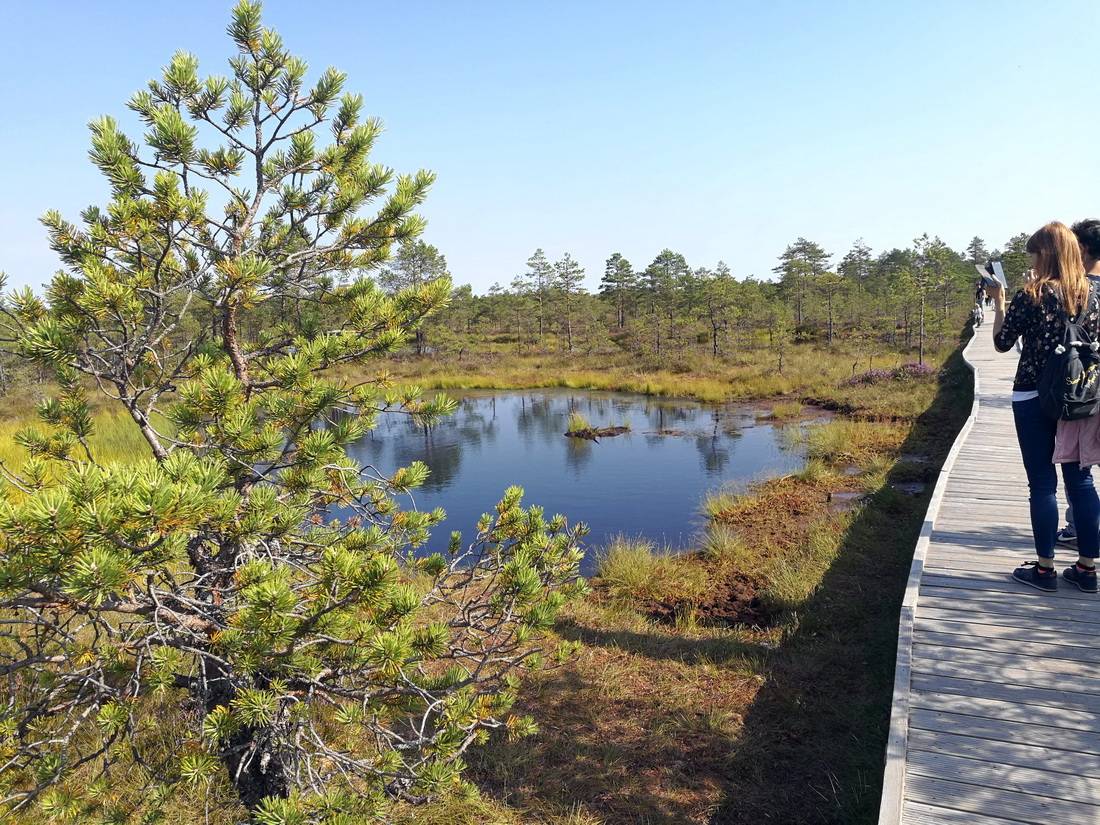
The wooden boardwalk through Viru Bog is 3.5 km long — and yes, you have to stay on it. The mossy ground is wetter than it looks.
In Estonia, bogs are cool — no, really. And Viru Bog in Lahemaa National Park is one of the best places to experience this otherworldly landscape on a quick day trip from Tallinn.
In brief:
- Best time to visit: May–October, or snowy winter days
- What to do: Walk the boardwalk, climb the tower, take a dip in a bog pool
- How long to spend here: 3–5 hours
- What to bring: Umbrella, swimsuit, mosquito repellent
Viru Bog (Estonian: Viru raba) feels timeless — like you’re walking through a 3,000-year-old painting. Small, twisted pines grow out of mossy ground, and wooden boardwalks take you across the wetlands. A tall watchtower offers sweeping views of the bog’s patchwork of pools and forests.
Feeling brave? You can even swim in a bog pool. The water looks dark yellow but is surprisingly clean. Only swim where there’s a designated platform — bogs are fragile and muddy underneath, so safety first.
The trail is about 3.5 km long (7 km round trip) and fully flat — suitable even for sandal-clad city folks. That said, bring an umbrella. There’s no shelter anywhere, and weather can change fast.
Birdwatchers, take note: around 30 species nest or migrate through this area, including golden eagles, pochards, and cranes. In autumn, you might hear the haunting calls of common cranes echoing over the bog.
There’s no café or shop, but the trail is well marked with clear signs. You’ll also find information boards along the way that explain the bog’s ecosystem. Just don’t expect much else — there’s only one basic toilet at the entrance, and no shelter from the rain. Entry is free, of course — welcome to Estonia.
How to Get to Viru Bog
The easiest way to visit Viru Bog from Tallinn is by bus.
It takes about 1–1.5 hours, and buses stop at Viru raba — right at the trailhead.
- Check schedules on peatus.ee
- If the bus is marked in blue, you can pay onboard or ride free
- No need to book in advance
4. Haapsalu
100 km from Tallinn · Bus: ~2 hours
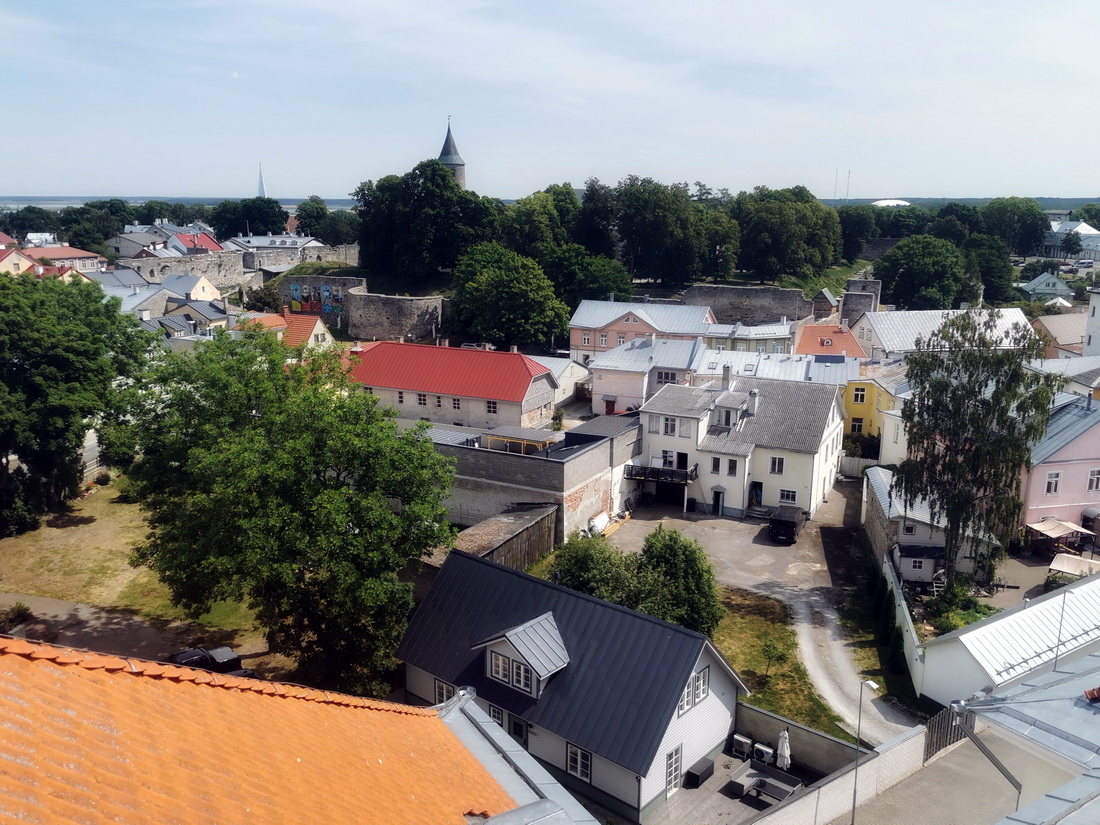
Haapsalu is easy to fall for — a few hours here, and you’re strolling beaches, wooden streets, and tiny cafés.
If you’re lucky with the weather, Haapsalu is one of the most charming day trips from Tallinn — full of wooden houses, lacy shawls, and long seaside walks.
In brief:
- Best time to visit: All year round (but best with sunshine!)
- What to do: Castle, promenade, lace museum, cosy cafés
- How long to spend here: 5–7 hours
Haapsalu is a resort town with a timeless feel. Strolling the seaside promenade — from African Beach to Chocolate Beach — is pure Estonian coastal magic. At the heart of it stands a beautifully preserved 19th-century wooden pavilion, the only one of its kind still intact in Estonia. Come in spring or summer, and you’ll find the town in festival mode — with music, markets, and people soaking up the calm.
In the Old Town, the 13th-century Episcopal Castle hosts everything from jazz concerts to yoga retreats. Surrounding it, colourful wooden houses hide cafés with ivy-covered courtyards — try Müüriääre Kohvik or Wiigi Kohvik for a slice of cake and a slow hour.
For something unique, visit the tiny Haapsalu Lace Centre (Karja 25) — home to Estonia’s famous lace shawls, hand-knitted from fine wool and so delicate they can pass through a wedding ring.
Love Astrid Lindgren? Haapsalu was the childhood town of Ilon Wikland, the illustrator behind Pippi Longstocking, Emil of Lönneberga, and more. Her whimsical spirit lives on at Ilon’s Wonderland, a charming museum just minutes from the castle.
How to Get to Haapsalu
Buses to Haapsalu leave multiple times a day from Tallinn. The ride takes around 1.5 to 2 hours. In summer, book ahead — this is a popular escape.
You’ll arrive at the old train station, now a historical landmark itself. From there, it’s a pleasant 10–15 minute walk to the town centre through streets lined with traditional wooden houses.
5. Narva
207 km from Tallinn · By train or bus: ~3 hours

In the photo, you can see Estonia’s Narva Castle (left) and Russia’s Ivangorod Fortress (right). The border runs along the bridge.
If you’re up for a longer adventure, Narva makes for a fascinating day trip from Tallinn. Located right on the Estonia–Russia border, this city feels like nowhere else in the country — part Soviet time capsule, part medieval stronghold.
In brief:
- Best time to visit: All year round
- What to do: Narva Castle, the river promenade, Town Hall
- How long to spend here: 5–7 hours
Narva may not be postcard-pretty, but it’s full of contrast. After heavy WWII bombing, it was rebuilt mostly in Soviet apartment blocks — but between them, you’ll find surprises.
Start at the restored Town Hall, now home to a tourist info centre and café. Right next door is Narva College, a sleek glass building that somehow fits right in.
The star, of course, is Narva Castle (also called Hermann Castle), built by the Danes in the 13th century. You can wander the grounds for free, but entry to the castle and Long Hermann Tower costs €15. From the top, it’s Estonia on one side, Russia’s Ivangorod Fortress on the other. The river is the border.
Inside, the museum mixes history with interactive fun — from medieval life to quirky corners like arm-wrestling Stalin or watching a ceiling-projected film. Not many rare artefacts, but definitely not boring.
Then head to the riverfront promenade, passing under the bridge to Russia. Unless you have a visa, that’s as far as you go — but the view of Ivangorod is worth it, especially at sunset.
For something different, visit the Narva House of Ingria (Ingeri maja) on Saturdays from 15:00 to 17:00. Now and then, they serve traditional dishes from Estonia’s smaller Finno-Ugric communities — hearty, homemade, and just €5 for three courses. It’s more pop-up than restaurant, so check ahead or just try your luck. Look for the souvenir shop entrance at Vaksali 19, near the bus station.
How to Get to Narva
You can reach Narva by bus or train from Tallinn — both take around 3 hours. Tickets are available online.
By bus: Get off at Peetri plats, then walk toward the Town Hall, and from there head down to the castle and river promenade.
By train: The station is about a 10-minute walk from Narva Castle. From there, continue toward the Town Hall, which is a bit farther inland.
Either way, you’ll see both sides of Narva — old and new, Estonia and beyond.
6. Viljandi
145 km from Tallinn · Bus: ~2.5 hours
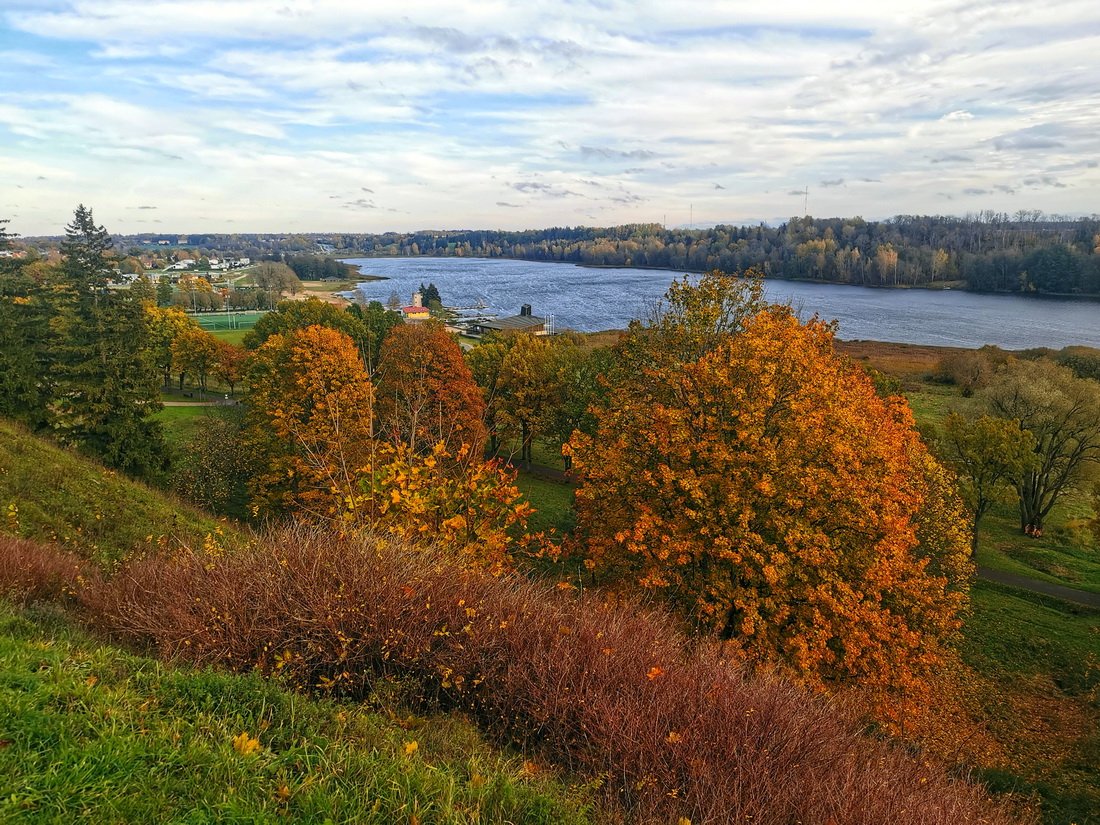
The photo was taken in mid-October from the hill where the castle ruins stand. A magical view in autumn!
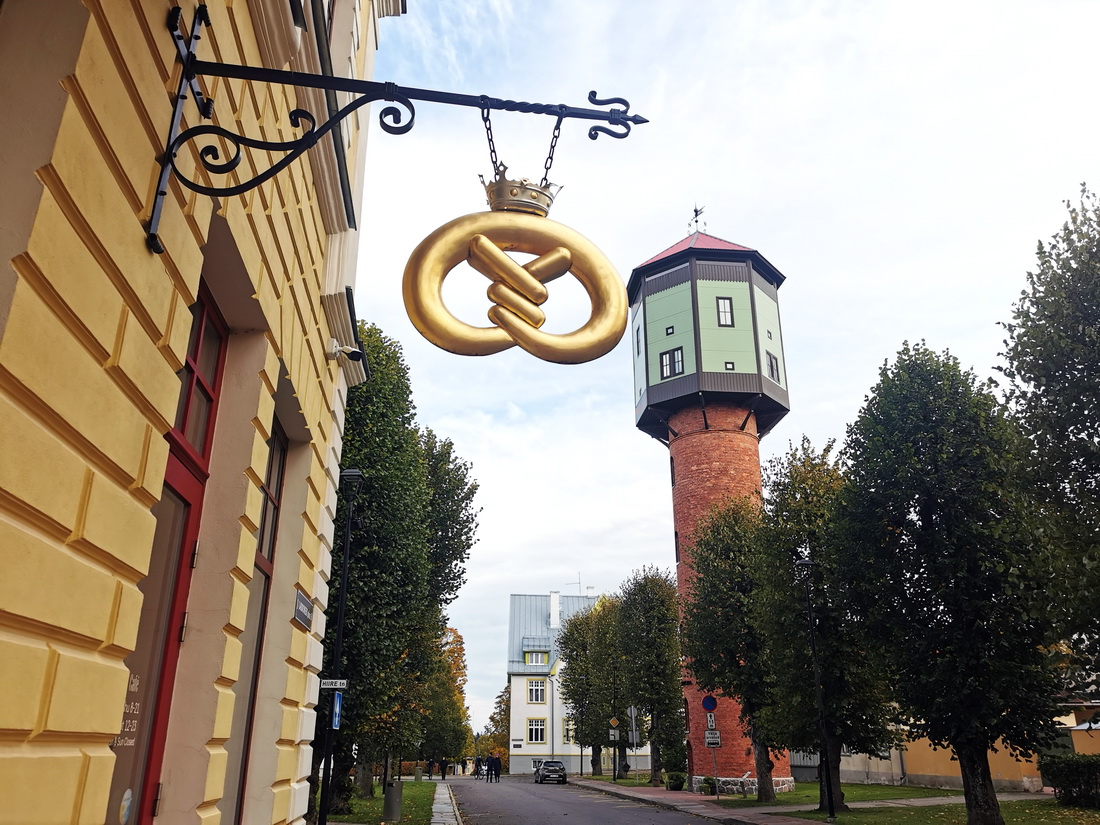
And this is the town centre. There aren’t many people around; locals are either sitting in cafes or admiring the golden leaves.
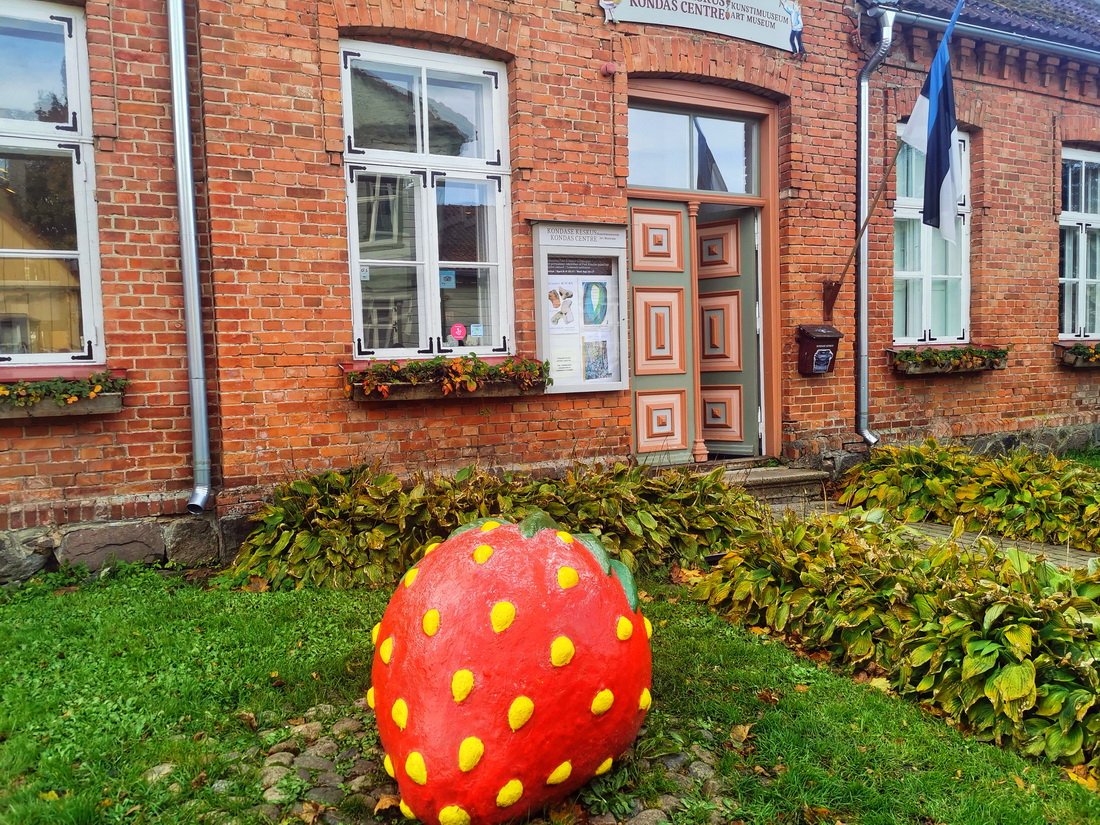
One of the strawberry sculptures is located at Kondase Keskus, but there are about a dozen of them around town.
Viljandi may be a small provincial town, but it’s packed with charm. Medieval castle ruins, weathered wooden houses, apple trees, and the occasional giant strawberry — what’s not to love?
In brief:
- Best time to visit: All year round
- What to do: Castle ruins, Kondase Keskus, spot the strawberries
- How long to spend here: 5–6 hours
The bus from Tallinn drops you right in the centre, and from there it’s a slow, pleasant 1.5 km walk to the Viljandi Castle Ruins. No need to rush — along the way, you’ll pass St. Paul’s Church, the local Viljandi Museum, and Kohvik Fellin, where the cakes are dangerously good and the locals know it.
Keep an eye out for the town’s quirkiest residents: giant strawberry sculptures scattered across parks and sidewalks. They’re a cheerful nod to Paul Kondas’s famous painting Strawberry Eaters — and yes, spotting them all becomes a low-key mission.
Make time for Kondase Keskus, a tiny outsider art gallery tucked into a wooden house. It only has a few rooms, but each one is full of heart. The postcard corner alone is worth a visit — one of the best I’ve seen in Estonia.
And back to that Viljandi Museum — it looks modest from the outside, but inside, I stumbled into one of the most unexpectedly charming rooms of the whole trip. There’s an entire space recreated to show local life as it once was — worn wedding clothes, old farm tools, enamel cups, wooden benches. Not flashy, but it stays with you.
The castle ruins are the final stop, and still the star. There’s not much left to climb, but the hilltop views, quiet park, and breeze through the trees make it feel like you’ve arrived somewhere important — or at least somewhere worth pausing.
How to get there
Buses from Tallinn Bus Station run several times a day, and the ride takes just over 2 hours. You’ll arrive in the centre of Viljandi — no taxi needed. Tickets are available at tpilet.ee.
7. Kuremäe
207 km from Tallinn · By bus with transfer~3–4 hours one way
If you’ve ever been curious about life inside a convent — this is your chance. Kuremäe is home to the Pühtitsa Convent, the only active Orthodox convent in Estonia. You don’t need to be religious to visit — just respectful, curious, and ideally dressed on the modest side.
In brief:
- Best time to visit: All year round
- What to do: Visit the convent, walk the grounds, see the firewood
- How long to spend here: 3–6 hours
- What to wear: Modest clothing (women can wear trousers, but avoid anything too revealing)
The village of Kuremäe is tiny — about 350 people live here. Just outside the convent, there’s a small café, a shop, and even a hostel if you feel like staying overnight.
The convent itself was founded in 1891, and the architecture is simple, quiet, and a little austere. Around 100 nuns live here today, mostly from Estonia and Russia. You’ll spot them moving quietly between buildings in long black robes — some older, some younger, all going about their day.
The grounds are large and peaceful, with living quarters, a kitchen building, a small orchard, and something I didn’t expect to find: beautifully stacked towers of firewood, shaped like wheat sheaves and reaching up to seven metres tall. Honestly, it’s almost an art form.
Visitors are welcome to walk through most of the courtyards and gardens — restricted areas are clearly marked. Phones should be silenced, and voices kept low. While Orthodox dress codes are usually strict, the convent is relatively relaxed: women can wear trousers, and only those dressed very revealingly might be asked to adjust their outfit.
Unless you’re here on an Orthodox holiday (like Easter), the convent is often nearly empty. But during Easter, the atmosphere changes completely — thousands of visitors arrive, and the celebration feels deeply moving, even if you’re just a quiet observer. (Just note that Orthodox Easter follows a different calendar — check the dates before you plan.)
How to Get to Kuremäe
The convent gates are open during the day, and entrance is free — no ticket or booking required. Just walk in quietly and explore the grounds at your own pace.
There’s no direct bus, but the journey is simple enough:
-
Take a bus from Tallinn Bus Station (Bussijaam) to Jõhvi — the ride takes around 2.5 hours.
-
From Jõhvi, catch bus number 60 to the convent gates (ticket from the driver).
Check the schedule on peatus.ee — bus 60 only runs a few times a day, so it’s best to plan ahead.
8. Saaremaa Island
220 km from Tallinn · By bus and ferry: ~4.5 hours one way
Saaremaa is a popular destination known for its historic buildings, lighthouses, sandy beaches, lush forests, and fantastic birdwatching opportunities. However, it’s a bit farther from Tallinn, and I reluctantly included it in this guide for day trips.
In brief:
- Best time to visit: April–September, or snowy winter
- What to do: Kuressaare Castle, Sõrve Lighthouse, birdwatching, crater lake
- How long to spend here: At least 6 hours
- What to bring: Mosquito repellent, swimsuit, snacks for the road
The main reason to go — even for just a few hours — is Kuressaare, the island’s small, walkable capital. It’s clean, friendly, and easy to navigate, with tree-lined streets, colourful houses, and plenty of cafés where locals stop for cake and the latest gossip. You’ll find everything within a short walking distance: shops, parks, the beach, and of course — the castle.
Kuressaare Castle is the centrepiece — a 14th-century fortress right by the sea, surrounded by moats and a peaceful park. You can walk the outer grounds for free, but it’s worth getting a ticket to see the museum inside. Exhibits cover everything from medieval history and weaponry to island folk costumes and daily life on Saaremaa. The towers offer great views of the coastline and the town.
If you’re only here for the day, you’ll likely have time to explore just Kuressaare — and that’s perfectly fine. But if you stay overnight, there are two more stops worth adding:
- Sõrve Lighthouse, about 30 km south of town, stands at the tip of the peninsula. On a clear day, you can see all the way to Latvia. There’s also a small maritime exhibit inside and a quiet beach nearby.
- Kaali Meteorite Crater is a round, green lake formed by a meteorite over 3,000 years ago. It’s small, easy to access, and makes a quick but memorable stop on the way to or from Kuressaare.
How to Get to Saaremaa
Take a bus from Tallinn Bus Station. It drives directly onto the ferry (no need to get off), and after a short sea crossing — complete with café and seagull views — you’ll continue by road to Kuressaare. The total journey takes about 4.5 hours one way.
In summer, it’s wise to book ahead on tpilet.ee, especially for return tickets.
Short on time or low on patience?
There’s also a small plane from Tallinn to Kuressaare, which takes just 40 minutes. You’ll find flights on flynyx.com. Not cheap, but it turns a maybe into a yes.
9. Helsinki, Finland
70 km from Tallinn · by ferry ~3 h each way
Crossing the Gulf of Finland to Helsinki is one of the easiest international day trips you can take from Tallinn — and yes, you can absolutely do it in a day. Just remember: boarding closes about 30 minutes before departure, so treat it like a flight and arrive early.
In brief:
- Best time to visit: April–September, or snowy winter
- What to do: Sights, markets, Suomenlinna, design, parks
- How long to spend here: At least 6 hours
- What to bring:ID card or passport
Helsinki is bigger and busier than Tallinn — and that’s part of the fun. The city centre is compact enough for a full day of exploring, especially if you know where you’re going.
Start at Market Square, where you can grab a paper plate of trout with potatoes — still one of the best simple meals around. Right behind it rises the white Helsinki Cathedral, grand and unmissable. Walk along the Esplanade, and the difference hits you: more minimal, more polished, more Finland.
Got time? Take the 20-minute ferry to Suomenlinna, a sea fortress spread across small islands. Entry is free, and the cobbled paths and cannons feel far from city life. Ferry tickets (€2.90) are valid for 80 minutes of public transport.
Back on land, stop by the Central Library Oodi — a sleek wooden spaceship near the main train station. Inside: books, 3D printers, sewing machines, a kids’ zone, and a café with a view. You’ll wish your local library looked like this.
And this is just the start. Helsinki is full of art museums, all within walking distance — Kiasma, the Design Museum, the Ateneum, and more. Add in quirky architecture, leafy parks, and sea air, and it’s clear: one day won’t be enough, but it’s worth it.
How to Get to Helsinki
Ferries run daily between Tallinn and Helsinki, operated by Tallink and Viking Line. Both take a little over two hours. The ships are large, comfortable, and often full — especially in summer or around holidays — so it’s smart to book tickets in advance.
In Tallinn, the ferry terminals are close together. In Helsinki, however, arrival terminals differ depending on the company — so check the location before planning your return route.
The ferry ride itself is part of the experience: sit outside on the open deck for salty air and Baltic views, or settle inside with a coffee and people-watch. Either way, you’re crossing borders in style.
Final thoughts
Estonia isn’t big — but it’s full of surprises. Just one or two hours from Tallinn, and you’re already in a new landscape: bog trails, border towns, quiet islands, old castles, even a whole other country. Some places are slow and peaceful, others bold and unexpected. That’s the beauty of day trips — no suitcase, no stress, just a good pair of shoes and a little curiosity.
I’ve done all of these trips myself, more than once, and each time something small changes — the light, the people, the café that wasn’t there last time. So whether it’s your first visit or your fifth, I hope this guide helps you discover something that feels just right.
And if the weather turns, the bus is late, or the lighthouse is closed? That’s part of the story too.







